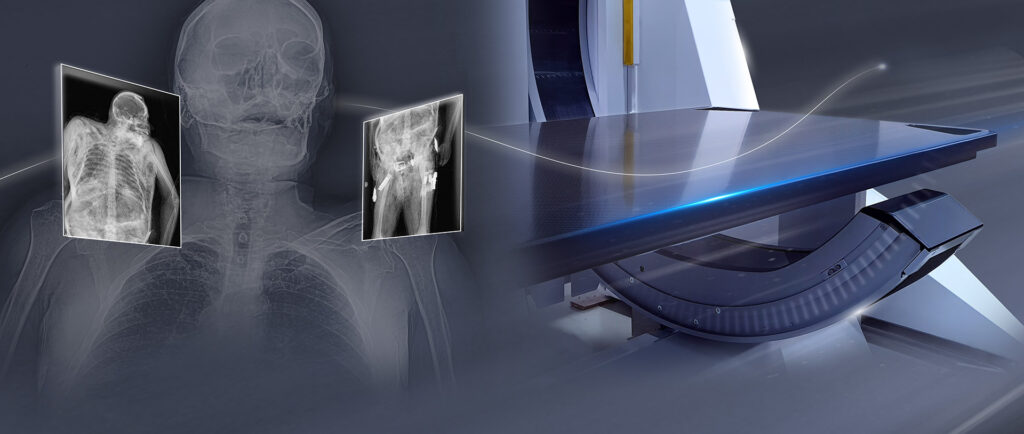Forensic science plays a critical role in criminal investigations, providing valuable insights to uncover and interpret evidence. One technological breakthrough that revolutionized forensic investigations is the Forensic X-ray body scanner. This article delves into the history of forensic X-ray body scanners, highlighting their evolution and significance in modern forensic science.
Early Beginnings
The use of X-rays for medical purposes dates back to the late 19th century, with Wilhelm Conrad Roentgen’s discovery in 1895. Soon after, X-rays found their way into forensic science, primarily used to aid in the identification of skeletal remains. The ability to capture detailed images of bones hidden beneath flesh provided forensic experts with crucial evidence to determine the cause of death and identify victims.
Advancements in Technology
As technology progressed, so did the capabilities of forensic X-ray body scanners. In the early days, X-ray machines were bulky and required long exposure times. However, over time, more compact and portable models were developed, facilitating their use in crime scene investigations and autopsy procedures.
The Rise of Digital Imaging
The late 20th century witnessed a significant leap in X-ray technology with the advent of digital imaging. Traditional film-based X-ray images gave way to digital images, offering enhanced resolution, reduced image degradation, and the ability to manipulate and analyze images using specialized software. This revolutionary shift greatly augmented the forensic capabilities of X-ray body scanners.
Improved Scanning Techniques
With further advancements, newer scanning techniques were introduced to enhance the capabilities of forensic X-ray body scanners. Dual-energy X-ray scanning, for instance, allowed for better differentiation and analysis of soft tissues, like internal organs, proving invaluable in establishing the cause and manner of death. These techniques brought about a higher level of detail and accuracy in forensic examinations.
Legal and Ethical Considerations
While forensic X-ray body scanners have significantly aided investigations, their deployment has raised legal and ethical concerns. Balancing privacy rights with the necessity of obtaining evidence is a delicate task. Striking the right balance often requires adherence to strict protocols and obtaining proper authorization and consent from relevant authorities.
In the modern world, X-ray forensic body scanners have helped circumvent the problem of autopsies in countries where it is religiously forbidden to perform them. One such X-ray machine of the modern era is the FOBOS XR scanner.

The ability to obtain high-resolution images of bones, soft tissues, and organs in less than 23 seconds exceeds the efficiency of many typical X-ray systems, which may take longer to produce detailed images. It adheres to forensic guidelines, making it ideal for forensic applications like examining evidence from traffic accidents, suicide cases, homicides, and drownings.
With the ability to handle body weights up to 340 kg/750 lbs, the FOBOS XR scanner can accommodate a wider range of subjects than many X-ray machines that have lower load limitations. Capable of capturing both anteroposterior (AP) and lateral scans and offering different angles up to 110°, providing comprehensive scanning capabilities which might not be available in some conventional X-ray systems.
Conclusion
The forensic X-ray body scanner has indeed traversed a remarkable journey since the advent of X-ray technology. From the cumbersome, film-based apparatus of the past to the swift, digital, and detailed imaging of today, each step forward has expanded the forensic scientist’s toolkit, enabling deeper insights into the causes and circumstances of death.
As we stand on the threshold of a new year, filled with possibilities, we embrace these technological marvels that aid justice and advance the pursuit of truth. We look forward with optimism to the innovations that the forthcoming year may bring to forensic science and all the disciplines it touches.




